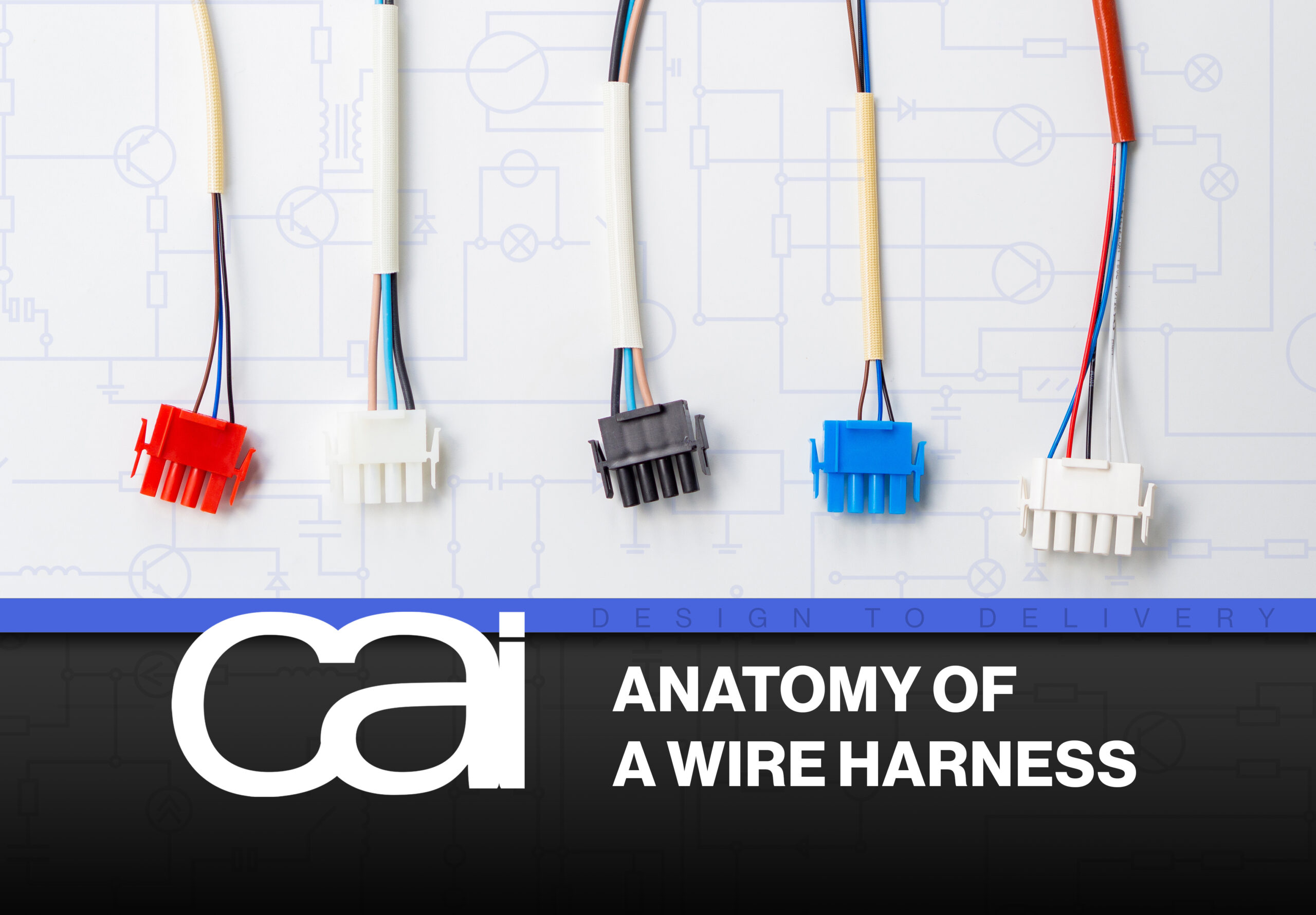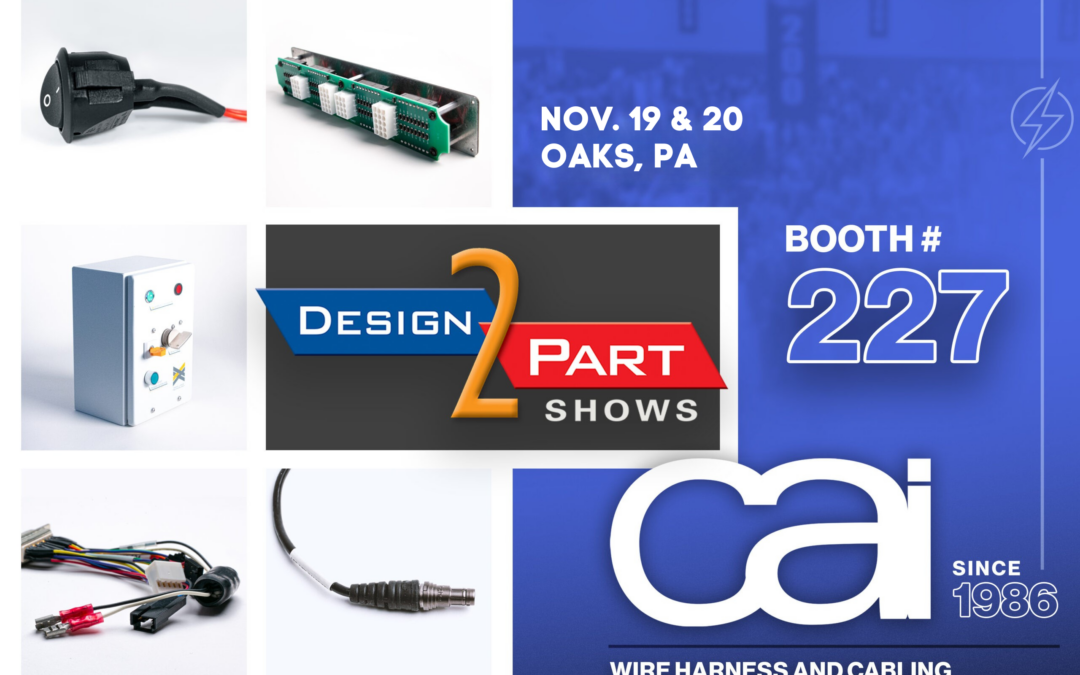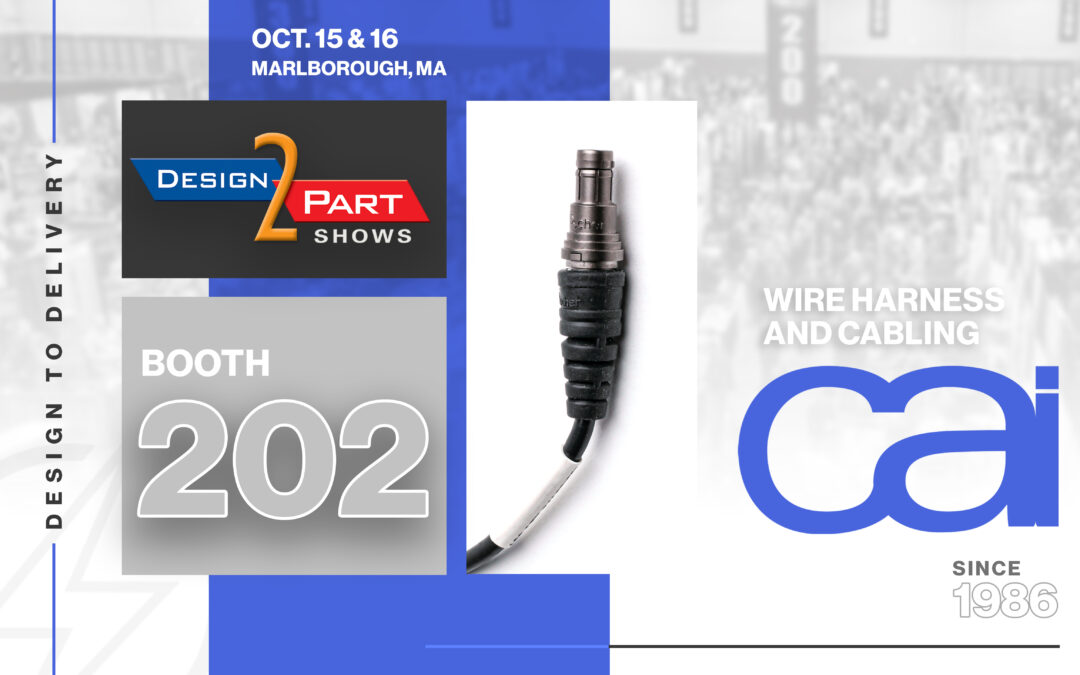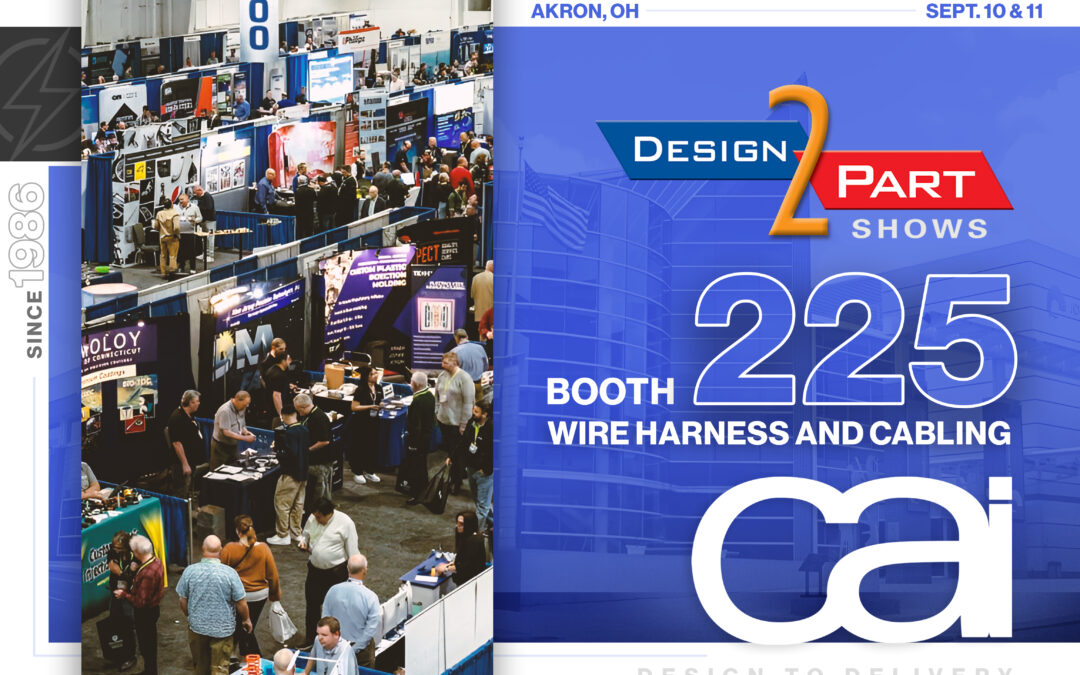Understanding Wire Harnesses & Their Critical Components
Essential in everything from automobiles to diagnostic equipment, wire harnesses are bundles of electrical wires and other components used to transmit power and data throughout electrical machines and devices. The harnessing of wires into a planned single, manageable assembly offers a number of desirable benefits compared to unharnessed wires, including enhanced safety, installation, reliability, and organization.
A wire harness is made up of several key components, each with their own particular functions. Understanding the makeup of a wire harness is critical to successful wire harness design and manufacturing.
With nearly 40 years of experience providing superior electrical systems for a wide variety of industries, CAI is the proven manufacturer you can count on to handle your unique needs while delivering an optimal customer experience. Reach out today to discuss your next project!
Conductors
The most important component of a wire harness is the wires or “electrical conductors” themselves, typically made of copper or aluminum, due to their excellent electrical conductivity and flexibility, which give them the ability to do what they were made to do: transmit power and data through electricity. Wires are usually covered in non-conductive insulating layers, often made of plastics like PVC or Teflon, to prevent problematic issues, such as short circuits, electrical hazards, and interference.
Connectors/Terminals
For the wires to be viable, they have connectors and terminals at their ends that establish secure and reliable connections between them and the devices and applications they serve. Both connectors and terminals combine two or more wires or components to create an electrical circuit.
Designed to be quickly and easily connected and disconnected (which aids in repair and replacement), a connector provides a physical/electrical interface that allows for the flow of electrical current from one element to another. There are several different types of connectors, including wire-to-wire, wire-to-board, and board-to-board. A terminal is the point where a conductor ends and acts as a connection point for external circuits. From ring, blade, and fork terminals to butt splices and disconnects, terminals are typically permanent and not easily disconnected and reconnected.
Protective Coverings
Protective coverings like heat shrink tubing, braided sleeving, conduits, and tape are often used to protect the wires within the harness from environmental threats like moisture, abrasion, heat, and chemicals. Offering extra insulation and strain relief, these typically flexible coverings enhance durability for longer life spans while also facilitating a safer environment by helping to prevent short circuits and fire hazards.
Fasteners & Mounting Hardware
For wire harnesses to perform optimally, they must be secured and routed correctly, away from continual movement, heat, or other damaging factors. Fasteners, such as ties, clamps, and clips, and mounting hardware and brackets are used to prevent tangling, abrasion, and other damaging effects, ensuring that harnesses remain in place, organized, and protected from the environment in order to maintain integrity.
Grommets & Strain Reliefs
Some areas along a wire harness’s route may be more vulnerable than others, which is where strain reliefs and grommets come in handy. Providing a cushion that helps guard the insulation from wear and tear, grommets made from rubber or silicone are used where the wire harness is anchored by a hard surface like metal or passes through holes in panels or enclosures, providing insulation and preventing abrasion. Made of steel, nylon, thermoplastic, or flexible PVC material, strain reliefs are added or molded in place to protect the harness from continual stress and tension, ensuring that connections stay secure.
Labels & Markers
Displaying critical information about the wiring and connections, such as voltage ratings and signal directions, labels and markers allow for easier and safer installation and repair, preventing mistakes and reducing downtime. Wire labeling or printed markings on wires help identify each wire’s function while connector labels ensure proper connections.
Grounding Elements
Proper grounding is critical for protecting against electrical shock, fires, and damage not only to appliances and electronics but to the surrounding environment. To ensure optimal safety, grounding wires connect electrical components to a ground point so unwanted and dangerous electrical charges can be dissipated. Widely used in automotive and industrial applications, ground straps and clamps are used to secure a grounding connection in the harness.
Each of these components plays a crucial role in ensuring that the wire harness functions properly, reliably, and safely in its intended application. Understanding these components is important for those who design, manufacture, or maintain wire harnesses and electrical systems.
At CAI, we have the experience, tools, and knowledge it takes to make high-quality, cost-effective electrical solutions, from wire harnesses and cable assemblies to PCBA and electromechanical assemblies. Request a quote and connect with us today!





